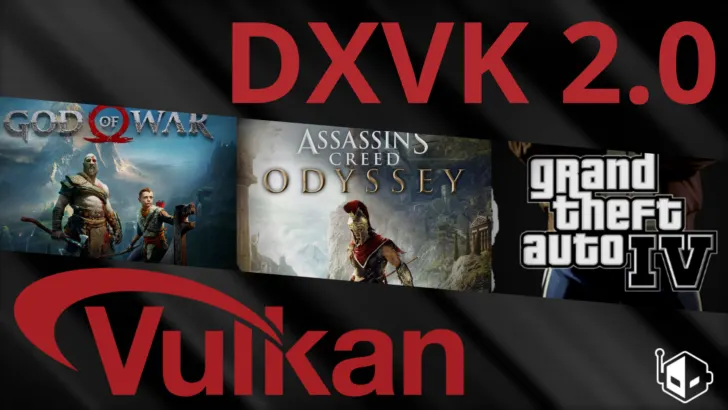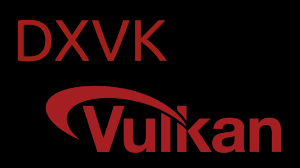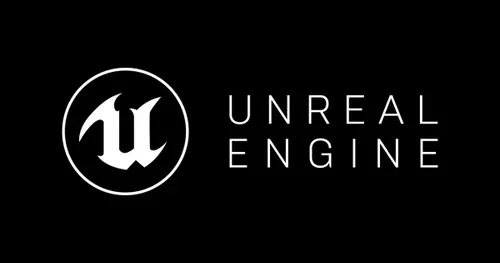DXVK is a powerful tool that allows gamers and developers to run DirectX-based applications on Linux and other non-Windows systems by translating DirectX calls to Vulkan. This open-source project has gained popularity for enabling Windows games to perform efficiently on Linux through compatibility layers like Wine. Understanding its requirements, particularly regarding Vulkan drivers, is crucial for seamless setup and optimal performance.
Vulkan, a modern graphics API, serves as the backbone for DXVK’s translation process. Unlike older APIs, Vulkan offers low-level hardware access, improving efficiency and cross-platform compatibility. DXVK leverages Vulkan to bridge the gap between DirectX and non-Windows environments, making it essential for users aiming to run games or applications smoothly on Linux systems.
The question of whether DXVK needs Vulkan drivers often arises among users new to Linux gaming. The short answer is yes—Vulkan drivers are mandatory for DXVK to function. Without proper Vulkan support, DXVK cannot translate DirectX calls, resulting in compatibility issues or application failures. This article explores DXVK’s dependency on Vulkan drivers, setup requirements, and optimization tips for the best experience.
What Is DXVK and How Does It Work?
Understanding DXVK’s Purpose
DXVK is a translation layer that converts DirectX 9, 10, and 11 API calls into Vulkan, enabling Windows games to run on Linux. It works alongside Wine, a compatibility layer, to emulate Windows environments. This allows gamers to enjoy titles like The Witcher 3 or Cyberpunk 2077 on Linux distributions. DXVK’s efficiency stems from Vulkan’s low-overhead design, offering near-native performance for many applications.
The Role of Vulkan in DXVK
Vulkan is the core API that DXVK relies on to process graphical instructions. By translating DirectX calls into Vulkan, DXVK ensures compatibility with Linux hardware. This process requires a graphics card and driver that support Vulkan. Without Vulkan, DXVK cannot function, as it lacks the necessary framework to handle rendering tasks. Essentially, Vulkan acts as the bridge between DirectX and Linux.
Why DXVK Is Popular
DXVK has become a go-to solution for Linux gamers due to its performance and compatibility. It reduces the overhead of running Windows games on non-native systems. Projects like Proton, used by Steam Deck, rely heavily on DXVK. Its open-source nature allows continuous improvements, making it a reliable choice. DXVK’s ability to leverage Vulkan ensures smooth gameplay for many modern titles.
Why Are Vulkan Drivers Essential for DXVK?
Vulkan Drivers Enable Graphics Rendering
Vulkan drivers are critical because they allow the graphics card to process Vulkan API calls. DXVK translates DirectX instructions into Vulkan, which the GPU then executes. Without Vulkan drivers installed, the system cannot interpret these calls, leading to errors or crashes. Major GPU vendors like NVIDIA, AMD, and Intel provide Vulkan drivers for their hardware.
Compatibility with Hardware
Vulkan drivers ensure that DXVK can communicate effectively with the GPU. Most modern GPUs support Vulkan, but older hardware may lack compatibility. Users must verify their GPU’s Vulkan support before installing DXVK. For instance, NVIDIA’s GeForce 600 series and newer typically support Vulkan, while AMD’s Radeon HD 7000 series and newer do as well. Always check vendor specifications.
Impact on Performance
Proper Vulkan drivers optimize DXVK’s performance by enabling efficient rendering. Outdated or missing drivers can cause stuttering, low frame rates, or graphical glitches. Regular driver updates from NVIDIA, AMD, or Intel improve compatibility and performance. For Linux users, open-source drivers like Mesa often provide robust Vulkan support, especially for AMD and Intel GPUs.
How to Check for Vulkan Driver Support
Using Terminal Commands
To verify Vulkan support on Linux, users can run specific terminal commands. The vulkaninfo command, part of the vulkan-tools package, displays detailed Vulkan configuration. If the command returns GPU details, Vulkan is supported. Alternatively, glxinfo | grep Vulkan can check for Vulkan extensions. These tools help confirm driver installation before setting up DXVK.
Checking GPU Compatibility
Not all GPUs support Vulkan, so checking hardware compatibility is essential. Tools like GPU-Z (on Windows) or lspci (on Linux) can identify the GPU model. Cross-reference this with the manufacturer’s Vulkan support list. NVIDIA, AMD, and Intel maintain online databases for Vulkan-compatible hardware. If the GPU lacks Vulkan support, DXVK cannot run.
Driver Installation Verification
Ensuring Vulkan drivers are installed is straightforward. On Linux, check the driver version using nvidia-smi for NVIDIA GPUs or glxinfo for Mesa-based drivers. For Ubuntu, the vulkan-tools package often includes necessary drivers. Windows users can verify Vulkan support via GPU vendor software, like NVIDIA Control Panel or AMD Radeon Software.
How to Install Vulkan Drivers for DXVK
Installing Drivers on Linux
To use DXVK, install Vulkan drivers suited to your GPU. For NVIDIA, download proprietary drivers from the official website or use a package manager like apt on Ubuntu. For AMD and Intel, the Mesa driver stack, included in most Linux distributions, provides Vulkan support. Run sudo apt install mesa-vulkan-drivers on Debian-based systems to ensure compatibility.
Installing Drivers on Windows
While DXVK is primarily for Linux, some Windows users experiment with it for performance tweaks. Vulkan drivers are typically bundled with GPU vendor software. NVIDIA users can install drivers via GeForce Experience, while AMD users rely on Radeon Software. Ensure the driver version supports Vulkan by checking:
- NVIDIA: Version 378.49 or newer
- AMD: Adrenalin 2019 or newer
- Intel: Integrated GPUs from Skylake or newer
Troubleshooting Driver Issues
If DXVK fails to run, driver issues may be the cause. Common problems include outdated drivers or missing Vulkan libraries. Update drivers through vendor tools or Linux package managers. Reinstall vulkan-tools and libvulkan1 on Linux if errors persist. Check DXVK logs for specific error codes to diagnose driver-related problems.
Optimizing DXVK Performance with Vulkan Drivers
Updating Drivers Regularly
Keeping Vulkan drivers updated ensures DXVK runs smoothly. New driver releases often include performance optimizations and bug fixes. For Linux, use sudo apt update && sudo apt upgrade to refresh Mesa drivers. NVIDIA users should check for proprietary driver updates via the driver utility. Regular updates prevent compatibility issues and enhance gameplay performance.
Configuring DXVK Settings
DXVK offers configuration options to fine-tune performance. The dxvk.conf file allows adjustments like limiting frame rates or enabling asynchronous shaders. These settings rely on robust Vulkan drivers to function correctly. For optimal results, use tools like MangoHUD to monitor performance metrics. Properly configured drivers and DXVK settings can significantly boost frame rates.
Hardware Considerations
Vulkan drivers perform best with modern hardware. High-end GPUs from NVIDIA (RTX series) or AMD (RX 6000 series) offer superior Vulkan support. Ensure sufficient system RAM and CPU power to complement GPU performance. For Linux, lightweight distributions like Pop!_OS optimize Vulkan driver integration, enhancing DXVK’s efficiency for gaming.
Common Issues and Solutions with DXVK and Vulkan
Games Not Launching
If a game fails to start with DXVK, check Vulkan driver installation. Missing libraries or incompatible drivers often cause this issue. Reinstall Vulkan packages (libvulkan1, vulkan-tools) and update GPU drivers. Verify the game’s compatibility with DXVK via the ProtonDB database. Some titles may require specific DXVK versions or Wine configurations.
Graphical Glitches
Graphical artifacts or stuttering often stem from driver issues or misconfigured DXVK settings. Ensure Vulkan drivers are up to date and compatible with the GPU. Disable experimental DXVK features in the configuration file. Using tools like VKD3D for DirectX 12 games can resolve issues if DXVK struggles with specific titles.
Performance Bottlenecks
Low performance may result from outdated drivers or insufficient hardware. Update Vulkan drivers and verify GPU compatibility. Monitor system resources with tools like htop or MangoHUD to identify bottlenecks. Adjusting DXVK’s shader settings or lowering in-game graphics options can improve frame rates. For complex setups, consult community forums like Reddit’s r/linux_gaming for tailored advice.
Conclusion
DXVK is a game-changer for running DirectX-based applications on Linux, but its reliance on Vulkan drivers is non-negotiable. These drivers enable the translation of DirectX calls, ensuring compatibility and performance. By verifying GPU support, installing the correct drivers, and optimizing settings, users can unlock DXVK’s full potential. Whether you’re a Linux gamer or a developer, understanding and maintaining Vulkan drivers is key to a seamless DXVK experience, delivering smooth gameplay and efficient rendering.



